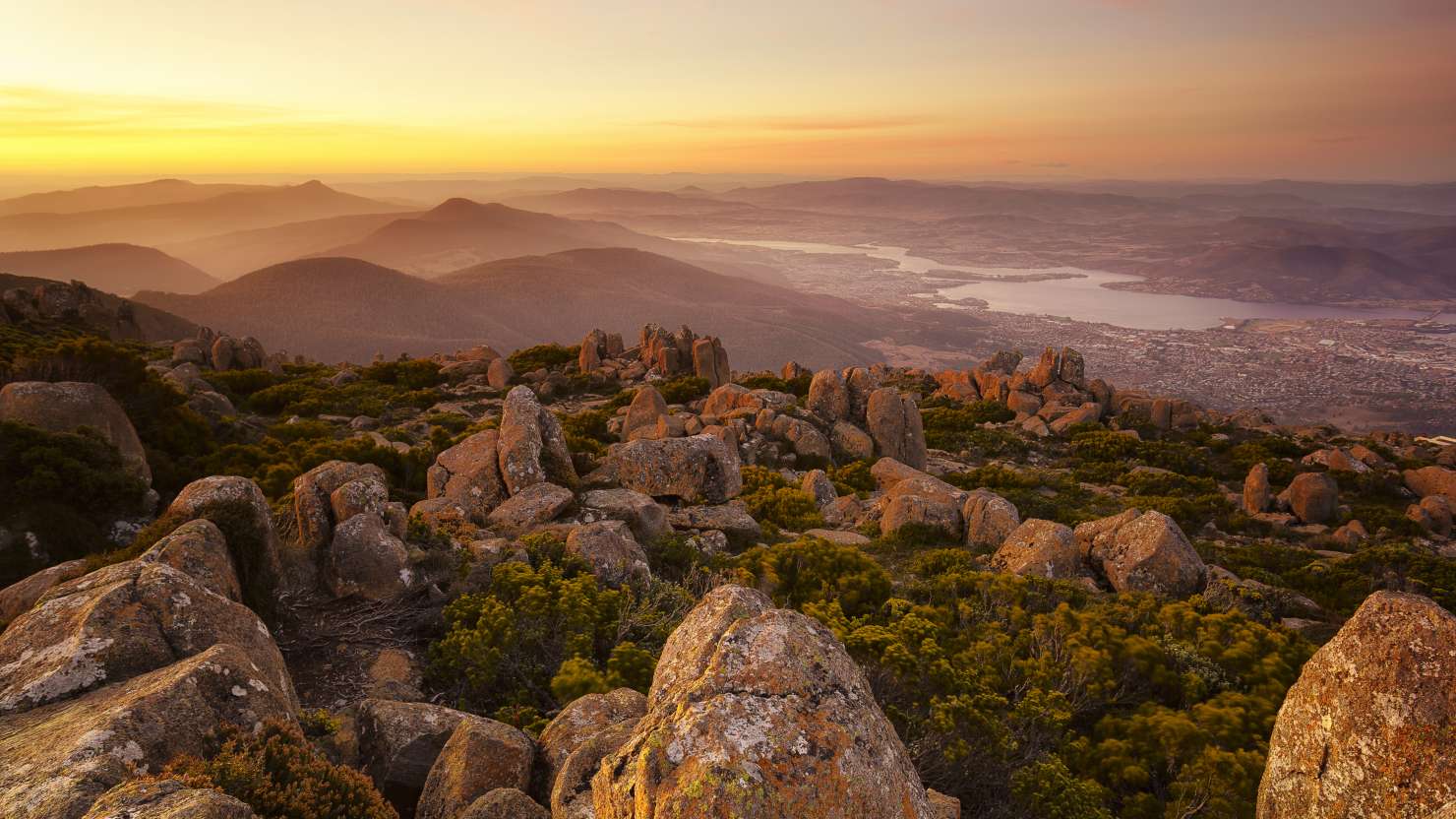Six incredible cruise destinations you can fly to
Discover Cunard destinations

Enthralling history, pristine beaches and a thriving foodie scene, coupled with renowned wineries and teeming wildlife, make Tasmania an enriching state to explore.
Located 150 miles south of the mainland, the island’s capital, Hobart, is both a time capsule of its colonial past and a beacon of contemporary culture. Built around the mouth of the Derwent River and first established in 1804, the European settlement is Australia’s second oldest city behind Sydney.
Evidence of Hobart’s pioneering heritage is immediately obvious to visitors who are struck by its distinctive Georgian architecture, delightful sandstone buildings and its showpiece street; Salamanca Place.

This stretch of two and three-storey warehouses, first built during the heady days of the whaling industry, today mark the focal point of activity in Hobart. Lined with restaurants, cafés, galleries and designer shops, Saturdays see this stunning street closed to vehicles and transformed into one of Australia’s best markets. The colourful collection of more than 300 clothing, craft and artisan food stalls paying homage to all that’s great about Tasmania.
The area surrounding Salamanca Markets is ideal for immersing yourself deeper into the history of this southern Australian capital.
A short stroll south of Salamanca Place, past the warehouses, craft stores and art galleries, you’ll encounter the suburb of Battery Point. This part of Hobart takes its name from the battery of guns that stood on the river’s edge from 1818, protecting the city against potential invaders. Today the narrow streets are best navigated by the Battery Point Sculpture Trail - a route of nine sculptures depicting key events in local history.
Leaving the original merchant’s district behind you, here you’ll get a taste of what life was like as an early resident of the colony. As you wander past craft breweries and convict-built churches, undoubtedly the most memorable part of your journey will be the ring of cottages on Arthur Circus. Built for the officers of the garrison in the 1800s, the quaint, picket-fenced properties retain a charming postcard-worthy feel.

As always in Hobart, the view from Arthur Circus will be dominated by the city’s ever-present backdrop, Kunanyi (Mount Wellington). Incorporating the name it was given by the area’s original inhabitants - the indigenous palawa kani people - this impressive landform stands 1,271 metres tall and is a significant wilderness on the city’s doorstep.
You can walk, pedal or drive to the peak of the mountain, which is the main feature of the 18,000-hectare Wellington Park. As well as stunning panoramic views from the summit, walking trails around Wellington Park connect you with a kaleidoscope of natural wonders, from 500 native plant species to wallabies, bandicoots, echidnas and potoroos.

Looking out from Mount Wellington, you’ll see that Hobart is still very much a city that thrives on its waterside location. For one of the Derwent River’s standout experiences, take a ferry from Brooke Street Pier to a world-famous attraction located at the ‘bottom of the world’.
Carved into the sandstone, cutting into the Derwent, the amazing MONA (Museum of Old and New Art) is much more than a cultural institution. This subterranean wonder, described by its founder as a “subversive adult Disneyland” proudly boasts a controversial collection of modern antiquities that have left many to describe this as “Australia’s Guggenheim”. Add to that a fabulous winery and restaurant and you have a day trip you may never forget.
While MONA represents Tasmania at its most cutting-edge, reminders of the state’s past are never far away. In South Hobart, Cascades Female Factory is a World Heritage Site offering tours of the barracks where female convicts were imprisoned from the late 1820s. A visit here offers a sobering insight into the conditions women prisoners endured during the early years of European settlement.

For an even more immersive experience, the living museum of Port Arthur is a must-see. Around 62 miles from Hobart, this brooding collection of around 30 sandstone prison buildings is separated from the island by a tiny strip of land. It was considered inescapable and yet conditions for the 1,000 inmates imprisoned here meant thoughts of escape were ever-present.
Often expelled from Britain for offences such as stealing small food staples, many prisoners were held in solitary confinement for 23 hours a day, bound by chains in work gangs or flogged with the infamous knotted whip, known as the cat o’ nine tails. Many never left the clutches of Port Arthur and a tiny island just off the site bears testimony to its brutality. Tours of the ‘Isle of the Dead’ reveal the 1,646 gravesites of those who perished at the prison.
Today, this World Heritage Site is considered one of the most important relics of Australian history and touring the complex with an expert guide will no doubt be a lingering memory of your visit to Tasmania’s island state.

of
Sign up to hear about exclusive updates, offers and competitions, and we’ll take care of the rest.